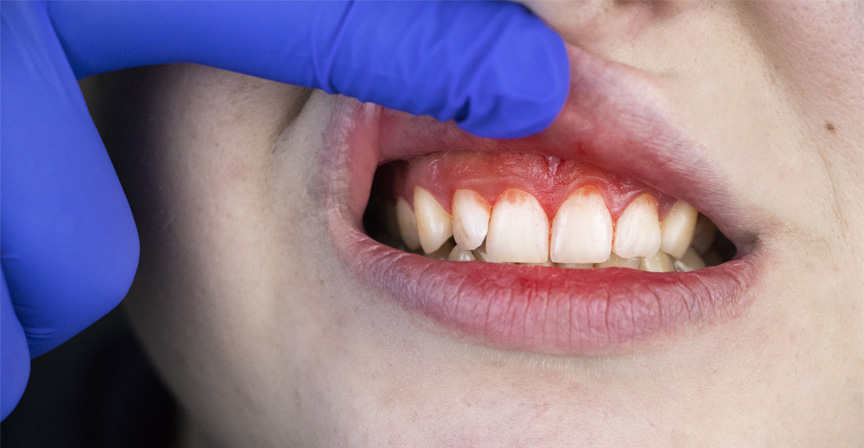Periodontics
What is Periodontics?
Periodontics is the dental specialty focusing exclusively in the inflammatory disease that destroys the gums and other supporting structures around the teeth. A periodontist is a dentist who specializes in the prevention, diagnosis, and treatment of periodontal, or disease, and in the placement of dental implants. Periodontists receive extensive training in these areas, including three additional years of education beyond dental school. As specialists in periodontal disease, they are experts in the latest techniques for diagnosing and treating periodontal disease. They are also trained in cosmetic periodontal procedures.

Periodontists treat cases ranging from mild gingivitis to more severe periodontitis. Periodontists offer a wide range of treatments, such as scaling and root planing (the cleaning of infected root surfaces), root surface debridement (the removal of damaged tissue), and regenerative procedures (the reversal of lost bone and tissue). When necessary, periodontists can also perform surgical procedures for patients with severe gum disease. Additionally, periodontists are trained in the placement, maintenance and repair of dental implants
- We provide both surgical and non-surgical periodontal services like scaling and root planing (“deep cleaning”), crown lengthening and dental implants
- We do Scaling which removes tartar and bacteria from your tooth surfaces and beneath your gums.
- We do Root Planing which gets rid of rough spots on the root of the tooth where the germs gather. This procedure helps remove bacteria that contribute to the disease by discouraging the further buildup of tartar.
- We perform Flap Surgery to remove tartar deposits in deep pockets. This surgery involves lifting back the gums and removing the tartar to keep the area clean and then the gums are sutured back in place so that the tissue fits snugly around the tooth again.
- In addition to Flap Surgery, we also provide our patients with a procedure known as Bone and Tissue Grafting. For Bone Grafting, we place natural or synthetic bone in place of the lost bone to promote the growth of bone in that particular area. In cases where the gum tissue has been lost we perform a procedure called Tissue Grafting in which a synthetic material or tissue is taken from another area of your mouth is used to cover exposed tooth roots.

Signs It’s Time to See a Periodontist
You might notice any one of the following symptoms that could indicate it’s time to see a periodontist.
- Bleeding: if you experience serious bleeding when you’re eating or brushing your teeth, this could be a sign of an infection in the gums. The earlier you get this checked out, the better.
- Continuous bad breath: ongoing bad breath despite good oral hygiene can tell you that your gums are infected. This is another early sign of gum disease, but one you should not ignore. Plus, it’s certainly unpleasant and can make you feel self-conscious.
- Gum recession or loose teeth: if you suddenly notice that your teeth look longer, that might be due to gum recession. Once infected, your gums will slowly create pockets that grow larger when left untreated. Eventually, the infection will attack your jawbone, which can cause loose teeth. This is a serious sign that you need to see a periodontist immediately to prevent losing a tooth entirely.
- Gangrene: this is a serious infection of the soft tissue, periodontal ligament or alveolar bone. Most people aren’t able to self-diagnose this symptom but a dentist or periodontist will see the infection.
- Other health conditions: sometimes, health conditions are the body’s way of telling you that something isn’t right. Some conditions that can correlate with periodontitis include osteopenia, diabetes, osteoporosis and heart disease. That’s because the bacterial infection from your gums could move to your bloodstream and affect other areas of the body.
